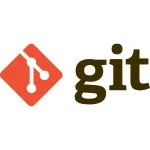Resign Patterns: Eliminate them with Agile practices and Quality Metrics
1 Cremational Patterns
Below is a list of five cremational patterns.
1.1 Abject Poverty
The Abject Poverty Pattern is evident in software that is so difficult to test and maintain that doing so results in massive budget overruns.
Agile Practices : Refactoring, TDD
Quality Metrics : LCOM4, RFC, Cyclomatic Complexity
1.2 Blinder
The Blinder Pattern is an expedient solution to a problem without regard for future changes in requirements. It is unclear as to whether the Blinder is named for the blinders worn by the software designer during the coding phase, or the desire to gouge his eyes out during the maintenance phase.
Agile Practices : Simple Design, Program Intently and Expressively
Quality Metrics : LCOM4, Cyclomatic Complexity
1.3 Fallacy Method
The Fallacy method is evident in handling corner cases. The logic looks correct, but if anyone actually bothers to test it, or if a corner case occurs, the Fallacy of the logic will become known.
Agile Practices : Unit Testing, User Stories , Customer Collaboration to define acceptance criteria and precise requirements
Quality Metrics : Code Coverage ( Line + Branch Coverage )
1.4 ProtoTry
The ProtoTry Pattern is a quick and dirty attempt to develop a working model of software. The original intent is to rewrite the ProtoTry, using lessons learned, but schedules never permit. The ProtoTry is also known as legacy code.
Agile Practices : Refactoring, Code in Increments
Quality Metrics : Code Coverage
1.5 Simpleton
The Simpleton Pattern is an extremely complex pattern used for the most trivial of tasks. The Simpleton is an accurate indicator of the skill level of its creator.
Agile Practices : Simple Design, Program Intently and Expressively
Quality Metrics : LCOM4 , Cyclomatic Complexity
2 Destructural Patterns
Below is a list of seven destructural patterns.
2.1 Adopter
The Adopter Pattern provides a home for orphaned functions. The result is a large family of functions that don’t look anything alike, whose only relation to one another is through the Adopter.
Agile Practices : Simple Design, Refactoring, Program Intently and Expressively
Quality Metrics : LCOM4 , Cyclomatic Complexity, RFC
2.2 Brig
The Brig Pattern is a container class for bad software. Also known as module.
Agile Practices : Refactoring, Code in increment, Write cohesive code
Quality Metrics : Package Complexity, Package Size
2.3 Compromise
The Compromise Pattern is used to balance the forces of schedule vs quality. The result is software of inferior quality that is still late.
Agile Practices : Continuous Integration and Continuous Inspection
Quality Metrics : Technical Debt
2.4 Detonator
The Detonator is extremely common, but often undetected. A common example is the calculations based on a 2 digit year field. This bomb is out there, and waiting to explode!
Agile Practices : Code Reviews, Unit Testing
Quality Metrics : Code Violations
2.5 Fromage
The Fromage Pattern is often full of holes. Fromage consists of cheesy little software tricks that make portability impossible. The older this pattern gets, the riper it smells.
Agile Practices : Refactoring , Code in Increments
Quality Metrics : Technical Debt
2.6 Flypaper
The Flypaper Pattern is written by one designer and maintained by another. The designer maintaining the Flypaper Pattern finds herself stuck, and will likely perish before getting loose.
Agile Practices : Communicate in Code, Keep a solutions log
Quality Metrics : Documentation Density
2.7 ePoxy
The ePoxy Pattern is evident in tightly coupled software modules. As coupling between modules increases, there appears to be an epoxy bond between them.
Agile Practices : Refactoring, Simple Design, Code in increment
Quality Metrics : Coupling, LCOM4
3 Misbehavioral Patterns
Below is a list of eleven misbehavioral patterns.
3.1 Chain of Possibilities
The Chain of Possibilities Pattern is evident in big, poorly documented modules. Nobody is sure of the full extent of its functionality, but the possibilities seem endless. Also known as Non-Deterministic.
Agile Practices : Communicate in Code, Keep a solutions log
Quality Metrics : Documentation Density
3.2 Commando
The Commando Pattern is used to get in and out quick, and get the job done. This pattern can break any encapsulation to accomplish its mission. It takes no prisoners.
Agile Practices : TDD, Unit Testing, Code in increment, Write Cohesive Code
Quality Metrics : Couplings, Complexity, Code Coverage
3.3 Intersperser
The Intersperser Pattern scatters pieces of functionality throughout a system, making a function impossible to test, modify, or understand.
Agile Practices : Code in increment, Write Cohesive Code
Quality Metrics : Complecity, Couplings
3.4 Instigator
The Instigator Pattern is seemingly benign, but wreaks havoc on other parts of the software system.
Agile Practices : Unit Testing, Continuous Integration
Quality Metrics : Code Coverage, Violations Density
3.5 Momentum
The Momentum Pattern grows exponentially, increasing size, memory requirements, complexity, and processing time.
Agile Practices : Code in increment, Refactoring, Keep It Simple
Quality Metrics : Complexity, Size
3.6 Medicator
The Medicator Pattern is a real time hog that makes the rest of the system appear to be medicated with strong sedatives.
Agile Practices : Continuous Integration
Quality Metrics : Couplings
3.7 Absolver
The Absolver Pattern is evident in problem ridden code developed by former employees. So many historical problems have been traced to this software that current employees can absolve their software of blame by
claiming that the absolver is responsible for any problem reported. Also known as It’s-not-in-my-code.
Agile Practices : Practice Collective Ownership, Attack problems in isolation
Quality Metrics : Unit Testing, TDD
3.8 Stake
The Stake Pattern is evident in problem ridden software written by designers who have since chosen the management ladder. Although fraught with problems, the manager’s stake in this software is too high to allow anyone to rewrite it, as it represents the pinnacle of the manager’s technical achievement.
Agile Practices : Practice Collective Ownership, Be a Mentor
Quality Metrics :
3.9 Eulogy
The Eulogy Pattern is eventually used on all projects employing the other 22 Resign Patterns. Also known as Post Mortem.
Agile Practices : Continuous Inspection, Code Reviews
Quality Metrics : ALL!!!
3.10 Tempest Method
The Tempest Method is used in the last few days before software delivery. The Tempest Method is characterized by lack of comments, and introduction of several Detonator Patterns.
Agile Practices : Communicate with code, Keep a solutions log
Quality Metrics : Documentation Density
3.11 Visitor From Hell
The Visitor From Hell Pattern is coincident with the absence of run time bounds checking on arrays. Inevitably, at least one control loop per system will have a Visitor From Hell Pattern that will overwrite
critical data.
Agile Practices : Code Reviews, Unit Testing
Quality Metrics : Violations Density
Don’t forget to share!
Reference: Design Patterns – Eliminate them with Agile practices and Quality Metrics from our JCG partner Papapetrou P. Patroklos at the Only Software matters blog.




